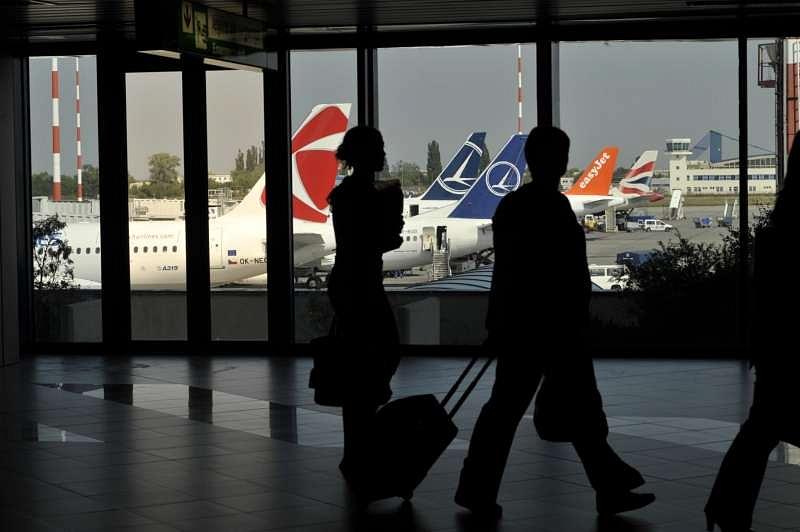Romanian airports report some of the highest passenger traffic increases in Europe

Romanian airports had some of the highest passenger traffic increases in Europe in 2016, according to data from the Airports Council International (ACI) Europe.
The council classifies airports in four groups, according to the number of passengers received each year: more than 25 million passengers per year (Group 1), between 10 and 25 million passengers (Group 2), between 5 and 10 million passengers (Group 3), and less than 5 million passengers per year (Group 4).
In the Group 4, three Romanian airports posted the highest increases in Europe, of over 100%.
The Oradea International Airport saw a 487.7% increase last year, compared to 2015. Local airlines Tarom and Blue Air operate flights from Oradea, as does Irish Ryanair, which will start operating from the Western Romania city in March of this year. Oradea is one of the cities Blue Air is connecting to the Romanian seaside, also starting this year, alongside Timisoara and Iasi. The international routes available out of Oradea are Barcelona, Torino and Milano.
The Iasi International Airport reported a 131.3% year-on-year passenger traffic increase in 2016. Four domestic destinations and 16 international ones are available from the Iasi airport. The international destinations include Paris (Beauvais), Londra (Luton), Roma (Fiumicino), Barcelona, Bruxelles, Koln (Bonn), and Valencia (Manises).
Domestic flights are available towards Cluj, Timisoara, Oradea, Bucharest, and, starting this year, Constanta. The Bucharest – Iasi route is one of the most popular ones, especially for business travel. Blue Air added last year a third daily flight between the Romanian capital and Iasi, at prices staring from RON 89.9 (EUR 20).
At the end of last year, the Iasi airport was estimating a traffic of 1.2 – 1.5 million passengers for 2017.
At the same time, passenger traffic on the Baneasa-based Aurel Vlaicu International Airport increased by 121.8% in 2016. The Baneasa airport, which was converted into a business airport in 2012, services charter flights and private jets. According to data from the airport, in 2015 the main destinations by the number of passengers were Prague, Budapest, Cairo, London, Constanta, Vienna, Bacau, Istanbul, Sofia, and Targu Mures.
The month of December 2016 also brought impressive traffic increases for Romanian airports in Group 4. The Aurel Vlaicu Airport saw a 615.9% increase in passenger traffic, the highest in Europe in its category, while the Arad airport reported a 500% increase, according to ACI Europe.
Europe-wide, other airports in Group 4 that posted significant traffic increases in 2016 were Ostend, in Belgium, with 64.5%, and Palanga (Lithuania) and Kharkiv (Ukraine) at 60.1%.
In the Group 3, Bucharest’s Otopeni Airport (Henri Coanda) reported an 18.3% traffic increase in 2016, the fourth highest in the category. The airport had some 10.98 million passengers last year, according to its own estimates. The increase in the traffic on Otopeni was surpassed by those registered in Berlin SXF (up 36.7%), Larnaca in Cyprus (24.2%), and Faro in Portugal (18.6%).
Among Romania’s international airports, the Avram Iancu Cluj International Airport also saw a significant increase in passenger numbers in 2016. The airport had almost 1.9 million passengers in 2016, up 25% on 2015, according to its own data. Ryanair, Wizz Air, and Blue Air all have flights from Cluj-Napoca to Romania’s capital Bucharest, which have become very popular.
The Traian Vuia International Airport in Timisoara had 1.16 million passengers in 2016, 26% more compared to the previous year, according to airport data. Both Ryanair and Blue Air started connecting Timisoara to Bucharest in 2016. The city should see an increasing number of tourists in the coming years as it has been designated one of the three European Capitals of Culture in 2021.
Overall, passenger traffic across the European airport network increased in 2016, posting an average growth of 5.1%. All of the growth was generated by the EU market, with airports in the bloc seeing passenger volumes increasing by a 6.7%, ACI Europe said.
"Europe’s airports broke the 2 billion passengers mark last year – an absolute record. While geopolitics and terrorism in particular played an increasing role in shaping the fortunes & misfortunes of many airports, the underlying story is one of continued growth and expansion – with passenger volumes growing in excess of +5% for the third consecutive year," said Olivier Jankovec, general director of ACI Europe.
editor@romania-insider.com











